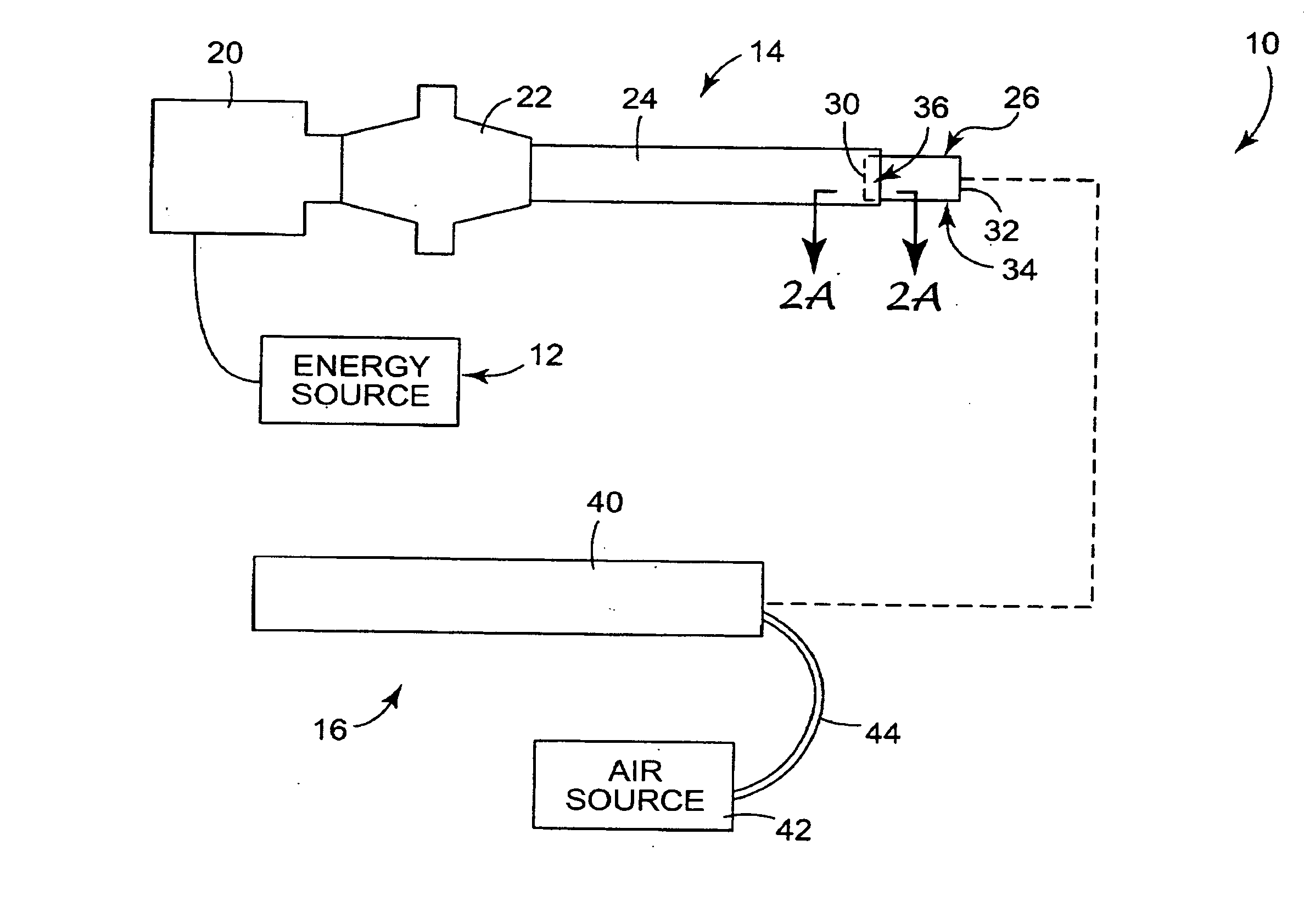Ultrasonic energy system and method including a ceramic horn
a technology of ultrasonic energy system and ceramic horn, which is applied in the field of ultrasonic energy system and method incorporating ceramic horn, can solve the problems of molten aluminum, unacceptable accepted horn materials, and inability to provide acceptable, etc., and achieves the effects of facilitating long-term operation, high corrosion and molten aluminum
- Summary
- Abstract
- Description
- Claims
- Application Information
AI Technical Summary
Benefits of technology
Problems solved by technology
Method used
Image
Examples
example 1
[0033] An ultrasonic horn stack was prepared by forming a cylindrical rod sialon horn having a length of approximately 11.75 inches and a diameter of 1 inch. The horn was interference fit-mounted to a titanium waveguide. The waveguide was mounted to a booster that in turn was mounted to a transducer. An appropriate energy source was electrically connected to the transducer. The so-constructed ultrasonic system was then operated to apply ultrasonic energy to a molten aluminum bath. In particular, aluminum metal was heated to a temperature in the range of about 705° C.-715° C. to form the molten aluminum bath. The ceramic horn was partially immersed in the molten aluminum bath, and the horn stack operated such that the horn transmitted approximately 65 watts at approximately 20 kHz and subjected to air cooling. At approximately 50-hour intervals, the horn was removed from the molten aluminum bath, acid etched, and visually checked for erosion. Further, stability of the junction betwee...
example 2
Preparation of Metal Matrix Composite Wires
[0034] Composite metal matrix wires were prepared using tows of NEXTEL™ 610 alumina ceramic fibers (commercially available from 3M Company, St. Paul, Minn.) immersed in a molten aluminum-based bath and subjected to ultrasonic energy to effectuate infiltration of the tow. In particular, an ultrasonic system that included a sialon horn, similar to the horn described in Example 1, was employed as part of a cast through methodology, shown schematically in FIG. 5. The process parameters were similar to those employed for fabricating aluminum matrix composites (AMC) and fully described in Example 1 of U.S. Pat. No. 6,344,270 ('270), herein incorporated by reference. The sialon horn of present invention replaced the niobium alloy horn described in the '270 patent. With this Example, the sialon horn transmitted about 65 watts at a frequency of about 20 kHz. Approximately 6,500 feet of wire was produced over the course of thirteen experimental runs...
PUM
| Property | Measurement | Unit |
|---|---|---|
| frequency | aaaaa | aaaaa |
| temperature | aaaaa | aaaaa |
| temperature | aaaaa | aaaaa |
Abstract
Description
Claims
Application Information
 Login to View More
Login to View More - R&D
- Intellectual Property
- Life Sciences
- Materials
- Tech Scout
- Unparalleled Data Quality
- Higher Quality Content
- 60% Fewer Hallucinations
Browse by: Latest US Patents, China's latest patents, Technical Efficacy Thesaurus, Application Domain, Technology Topic, Popular Technical Reports.
© 2025 PatSnap. All rights reserved.Legal|Privacy policy|Modern Slavery Act Transparency Statement|Sitemap|About US| Contact US: help@patsnap.com



